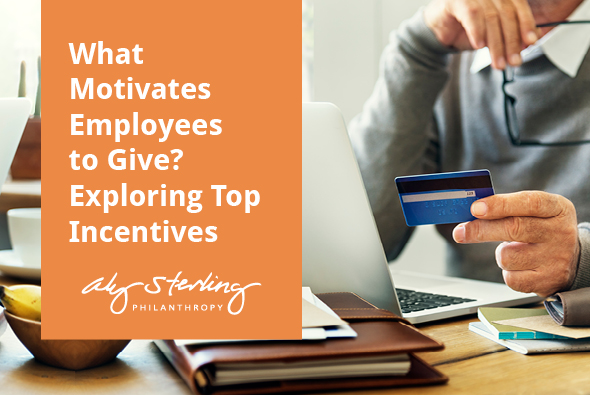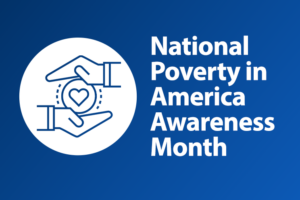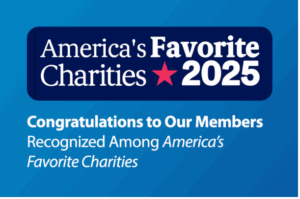Aly Sterling, Aly Sterling Philanthropy | March 15, 2021
What Motivates Employees to Give? Exploring Top Incentives
Employee characteristics and attitudes are seeing a period of comprehensive transformation. Generational shifts are bringing more Millennial and Gen Z workers into the workforce while Baby Boomers retire, and swift technological advancement (not to mention the global pandemic!) has massively altered the way we do work.
Alongside this shift, employee attitudes about philanthropy are changing, too. Research shows workers are willing to donate to charitable causes or give their time through volunteering— in fact, they’re excited to do so. So what does this mean for you?
If you’re an employer, this means better opportunities to foster employee engagement. If you’re a nonprofit fundraising professional, this means greater support for your cause. Whatever your perspective, you must first fully understand employee motivations to take advantage of growing charitable sentiments.
With this in mind, America’s Charities released a study exploring attitudes of American workers toward workplace giving, volunteering, and corporate social responsibility (CSR). The study found these top five motivations for employee giving:
- Paid time off to volunteer
- Employer matching gift programs
- Easy-to-use online giving platforms
- Volunteer grant opportunities
- Ability to connect with colleagues and causes of their choosing
Here at Aly Sterling Philanthropy, our fundraising consultants have seen firsthand the benefits of strong bonds between nonprofits and the for-profit world. We’ll dive into this issue by first explaining why you should pay attention to trends in employee giving and what they mean for you. Then, we’ll describe the top five employee-giving motivations and provide additional tips for nonprofit professionals looking to steward donors to create long-lasting relationships. Let’s get started!
Why is employee giving so important?
Brands and nonprofits receive different benefits from employee giving, but they must work together to maximize these benefits. For nonprofit professionals, employee giving and corporate relationships can:
Expand your mission’s reach and build sustainable revenue
Nonprofits benefit from employee giving and corporate partnerships because of the fundraising boosts they provide. A central feature of these programs is payroll giving, enabling nonprofits to access recurring revenue all year long. In fact, workplace giving is considered one of the most cost-effective ways to support charities — because giving is aggregated, nonprofits save precious time and money processing a handful of larger donations throughout the year rather than thousands of individual payments along the way.
But these relationships are much more than just a funding stream. They also introduce your mission to a new audience that can bring novel ideas and a fresh perspective. Through consistent and deliberate stewardship efforts, these new audience members have the potential to become long-term supporters of your nonprofit — and even major gift donors.
Therefore, as a nonprofit professional, it’s important to analyze employee giving trends. Once you understand what drives donors, you can use your marketing platforms to encourage and empower your corporate partners to provide these enticing incentives. You’ll gain a revenue boost through increased fundraising and a community of new supporters along the way!
From the employer perspective, employee giving and community involvement can:
Enhance employee engagement and improve your brand image
By promoting employee giving and providing opportunities for community involvement, you can augment employee wellness and decrease burnout. People derive personal fulfillment and a sense of accomplishment from volunteering and donating, and leaning into this sentiment boosts employee morale.
These types of programs have also increasingly become an expectation. Research shows that 71 percent of employees want their employers to provide opportunities for them to help make a positive impact on the company’s social and environmental commitments, and community commitment is a factor when deciding where to work. CSR programs have gone from a “nice to have” job perk to a “need to have” program to retain employees.
Ultimately, emphasizing employee giving helps enhance your image as a socially-responsible business operation, which is particularly important now, as the world watches how brands respond to the pandemic.
With these benefits in mind, here are the top five employee motivations for getting involved with nonprofit causes, and how employers can respond to these desires:
Paid time off to volunteer
In its study, America’s Charities found that employees listed having paid time off to volunteer as the number one motivating factor for getting involved in charitable causes.
After working all day, taking care of kids or other family members, doing household chores, and running errands, many people find it hard to find free time to devote to volunteering. However, by receiving paid time off to get involved in a local organization, employees can contribute their time and energy without worrying about the million other things on their to-do lists.
In the study, employees expressed gratitude for employers who offer paid volunteering time, saying they appreciate employer investment in their personal growth and development outside of work.
A year after the COVID-19 pandemic first hit, virtual volunteer opportunities have become the norm. Much of the volunteering is skills-based, which not only helps workers support their communities but also develops their leadership skills and broader skill sets.
Next steps: As an employer, you likely provide other opportunities for paid time off, such as vacation time, sick time, and time to take care of personal needs. By adding paid time off for volunteering, you can invest in your employee’s overall wellbeing and promote greater community development in the process. Click here for five key steps to starting an employee volunteer and skills-giving program.
Employer matching gift programs
The existence of employer matching gift programs is another top motivating factor for employees to get involved in charitable giving. According to America’s Charities’ Definitive Matching Gifts Guide for Employers, these initiatives involve employers matching contributions made by their employees to eligible nonprofits, usually dollar for dollar up to a certain amount.
These programs are so exciting to charitable-minded employees because they can double, triple, or even quadruple the impact of their singular contributions. Employees respect corporations that put their money where their mouth is and actively support nonprofits that are close to their hearts. And 84 percent of donors are more likely to give – and another one in three would give more – if their gift is matched, meaning it’s an incredibly useful tool for nonprofits. Double the Donation offers nonprofits a widget to add to their website which makes it easy for donors to find out if their employer matches contributions.
Next steps: Be sure to investigate the process of starting up a matching gift program to get this initiative started within your organization. Or, if you already have a matching gift program, remind your employees of the opportunity and encourage them to submit their forms to capitalize on their donations.
Easy-to-use online giving platforms
People don’t want to waste time figuring out how to donate to an organization. On the corporate side, consider what matters most to you. Do you want a giving platform that integrates with your other human resources, CSR, or business processes? Do you want to do something quickly — say, help provide support after a natural disaster? Do you want a giving-only campaign or do you want to include aspects such as volunteering, gift matching, corporate grants management, and so on? What kind of reporting do you need, and how do you want to visualize the data and share it? Do you want to use your workplace giving platform to help define your corporate goals, or do you already have a clear set of goals, such as the UN’s Sustainable Development Goals (SDGs), and your site needs to incorporate and reflect those goals?
On the nonprofit side, if a donation page or form is too confusing, many people will abandon it entirely rather than continue deciphering the various steps. Therefore, making sure donors can easily give to you, through a variety of mechanisms – including employee giving – is essential.
Next steps: Companies, check out this article that outlines four kinds of giving and engagement platforms available based on your goals and preferences. Nonprofits, if you’re creating your website or online donation page for your employees to support a specific organization, be sure to reference this guide for a few best practices. You must make your page easily accessible from your main site, responsive to all devices, and able to process multiple payment methods. You should also ensure your form fields are simple, perhaps by adding pre-filled gift suggestions, to make the donation process as smooth as possible.
Volunteer grant opportunities
Much like matching gift programs, volunteer grants also offer employees the opportunity to get more out of their contributions than they originally thought. However, rather than matching monetary donations, companies reward employees who volunteer a certain amount by donating a set amount of money to that charity where the employee volunteered. This maximizes the impact of their employees’ contributions, helps brands engage and support their employees, and burnishes a brand’s reputation.
These grants, which are sometimes also known as Dollars for Doers grants, encourage employee volunteerism by empowering them to make an outsized contribution to important causes. Along with offering paid time off for volunteering and a matching gift program, volunteer grant opportunities enhance your standing as an altruistic organization dedicated to investing in causes that improve the world. Double the Donation has a comprehensive list of top volunteer grant programs.
Next steps: Show your employees you care about the causes and organizations that matter to them by implementing a Dollars for Doers program.
Ability to connect with coworkers
Employees emphasized having the opportunity to engage with colleagues as a top motivator for getting involved in charitable workplace giving. Employees often form groups to volunteer together, which creates deeper connections and friendships among coworkers. These improved relationships can contribute to smoother teamwork and better collaboration back at the office, too.
During this era of social distancing, staying connected with coworkers is essential, especially for employees who joined the team after the start of the pandemic. Virtual volunteering can be a great way for these new employees to meet the team and start forming relationships, and it can help old colleagues connect again in a new way. In many ways, workplace giving has become even more important during the pandemic — namely because these are digital programs that bring people together.
Next steps: Learn the facts of employee giving and how you can make a difference while keeping your distance. Encourage employees to team up to participate in virtual volunteering tasks or socially-distanced volunteer opportunities. Consider sending out emails about upcoming volunteer opportunities or noting them on your shared calendar.
Tips for ongoing engagement
By now, employers likely have a good idea of how they can take employee motivations into account to promote giving and volunteerism for improved office culture. But how can nonprofit professionals make the most of increased employee altruism?
As this nonprofit consultant guide explains, access to diverse revenue streams helps nonprofits become more resilient. Utilizing multiple fundraising channels helps your organization weather crises and maintain consistent funding despite any disruptions. Your corporate partnerships are one of the many fundraising channels you must optimize to improve your long-term fundraising strategy.
For example, you might be carrying out a capital campaign that requires a significant amount of fundraising, and your corporate partners will be one of the key funding sources in that effort. The key to maximizing employee giving and corporate partnerships is improving your donor stewardship approach.
As a fundraising professional, your engagement with employee donors shouldn’t end when you receive a donation from them. It’s imperative that you follow-up with individual givers to thank them for their contributions and keep them engaged in your mission by providing frequent updates on your projects and programs. Through donor recognition efforts, you can transform these one-time or infrequent donors into long-term supporters of your organization.
Be sure to also check in regularly with your corporate partners to thank them for their support, highlight the benefits of matching gift and volunteer grant programs for your cause and ensure they’re promoting these initiatives to employees.
Whether you’re an employer or a nonprofit professional, you should now have a clear understanding of what drives employees to get involved in nonprofit causes and how their engagement benefits your organization. Use this knowledge to your advantage by actively incorporating employee motivations into your strategy moving forward. Good luck!
About the author: Long before Aly Sterling founded her eponymous consulting firm, she was solving the unique yet similar problems encountered by nonprofit organizations.
Her decision to start her own business in 2007 was driven by her belief in leadership as the single most important factor in organizational success, and her determination to work with multiple causes at one time to scale societal change.
Aly’s expertise includes fundraising, strategic planning, search consultation, and board leadership development for the well-positioned nonprofit. She is regularly sought for comment by trade and mainstream media, including the Chronicle of Philanthropy and U.S. News & World Report. She has contributed to publications of BoardSource and The Governance Institute, as well as the Toledo Chamber of Commerce and The Giving Institute.

Get Resources and Insights Straight To Your Inbox
Explore More Articles
Congratulations to Our Members Recognized Among America’s Favorite Charities
Each year, The Chronicle of Philanthropy releases its list of America’s Favorite Charities—the 100 nonprofits that raise the most from individual donors, foundations, and corporate…
Read ArticleGet Resources and Insights Straight To Your Inbox
Receive our monthly/bi-monthly newsletter filled with information about causes, nonprofit impact, and topics important for corporate social responsibility and employee engagement professionals, including disaster response, workplace giving, matching gifts, employee assistance funds, volunteering, scholarship award program management, grantmaking, and other philanthropic initiatives.





